In the world o' wildlife, behaviors change where weather and cold and and ice rule. Pretty much all critters hunker down in rain and snow storms. But crack that sky a bit, and let a ray of light shine through, and the days go crazy with activity & growth. Every bird, cat & coon crawls out and starts digging, hunting & foraging for nourishment. Well, at least the ones that didn't migrate. Or aren't deep asleep in their beds, while visions of sweet acorns dance in their heads.
1. Winter Rules
Generally obvious, but good to review to understand why the animals do what they do.
It's frickin' cold
Cold means more heat to stay warm, which means more fuel at a time when there's typically less to be found. Where you sleep matters too - hunkerin' in a nest hole or tree hollow can save you 10% or more in energy use over nappin' on a branch. Snuggling with a bunch of buds conserves even more than that. Growing a winter coat is also a good idea. Or, fluff up your feathers and trap insulating air beneath them - that can conserve 10-30% of energy. Or, spend most of your time underground, where it pretty much stays a balmy 50ºF all Winter.
Snack scarcity
If your typical food source dies back, goes to ground or leaves town, you gotta move to Plan B. Plan B varies wildly by critter - could mean migrate, could mean hoard that food beforehand.
Snow depth
Two ways to get through soft snow: wade with your feet on the ground below, or walk on top. The latter only works if you're small and lightweight, like a bunny, bird, squirrel or geisha. If you're heavy, and the snow is too deep for your lil legs, then you've got troubles (ground clearance under a fox or bobcat is about 12"). If the snow is so deep that what you normally supper on is buried and unfindable, then you've got double-troubles.
Sub-freezing
It's one thing to get snow cycles, it's another altogether when the temp is consistently sub-freezing and all the water around is ice 24/7. Hard to dig up nuts when the ground's frozen solid. Tough to gnaw that stashed deer leg when it's a meatcicle (especially if you're a cat and don't have the teeth for it). Difficult to browse brush that's more ice & frost than leaves.
Snowmelt & snowlessness
The savior of Winter for many stay-at-home critters are the days when it toasts up enough for the snow to start melting, or even disappear entirely here and there. During these treasured windows, every bird & beast comes out to play.
====
2. Adaptive Strategies
The various strategies critters use to ride out the winter woes often depend most on what happens to their food source, but the other winter rules are also key, because they may be why that food is absent or diminished. Here's the strategies I've observed in our area.
Die back to basics
Many insects die back to eggs or larvae in Winter (especially flyers: ice + snow + light flimsy wings = not so much). Grasshoppers, lady-beetles, dragonflies, cicadas... Most flies & mosquitoes also die back, but can quickly bloom during warm spells of only 5 days (nasty devils).
Lots of trees & plants die back, go deciduous and dormant, also strongly affecting whatever critters rely on them. Black and valley oaks, maple, alder, walnut, willow and buckeye are all deciduous. Redbud, elderberry and gooseberry too. And, the 100+ species of annual and perennial wildflowers that grow in the area die back to roots or seeds as well.
Get outta dodge
Pack your bags and migrate to warmer lands. Sometimes this is just a lower elevation where there's less or no snow. We get the mule deer bucks because of this - they come down from the 4-5,000-foot elevations to our slice of the 3,000-foot lower montane ecosystem for Winter (and for mating - the lovely ladies stay in the lower montane year round).
Mule deer bucks in snow:
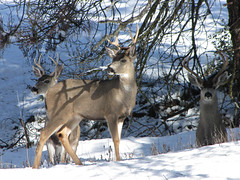

Birds are an obvious top user of this strategy. In our area of the Sierra, it seems that many of the birds that feed heavily on flying insects migrate because those insects die back. The phoebes, warblers, tanagers and blackbirds all seem to leave town. The fish and frog eaters too - the heron, kingfisher and kingbird. And the hummers might sneak away for a little while too. Not much nectar in the months of January & February. The tough anna's might stay though.
Our local little brown bats also migrate. They migrate to hibernate. They go somewhere to a big communal cave or mine to cluster in numbers that can sometimes reach thousands. They'll also come back after the flying bugs hit the air.
Phoebe, warbler, tanager & lbb:
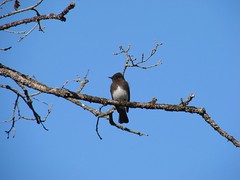
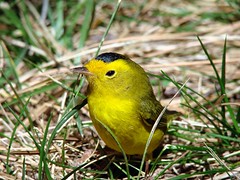
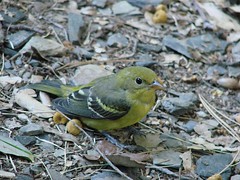
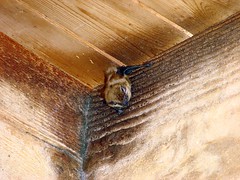
And speaking of flying bugs, some butterflies migrate. The infamous monarch, and less infamous but also wonderful painted ladies, buckeyes and tortoiseshells flutter off to warmer climes for Winter. In the case of monarchs, they make an epic journey to overwinter in southern California or the highlands of Mexico (depending on which side of the Rockies they grow up on).
Monarch, tortoiseshell & painted lady:
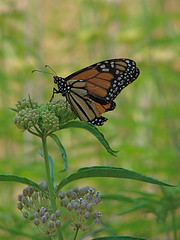
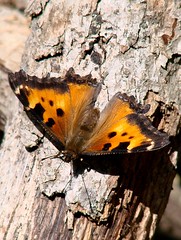
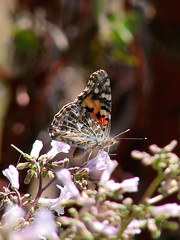
Nap the night away
Sleeping through Winter can be a good way to go. You gotta bulk up seriously beforehand and slow down your system to reduce energy use though. Black bears go into a deep sleep to do this, but it's not true hibernation. They're still groggy-awake and often will fully wake up for brief warm spells to go out and forage more. They don't eat, drink or pee while sleeping though, and typically add up to 50% to their weight before settling in (i.e., a good thanksgiving dinner around our family). Bet that first pee after the long nap feels really good.
Black bear out foraging after snowmelt - note saggy belly from using up food stores:

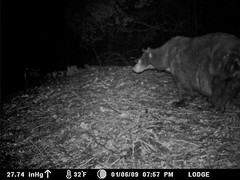
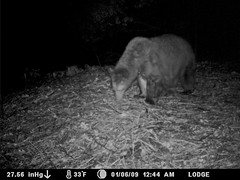
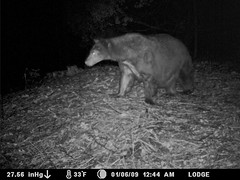
Ground squirrels are true hibernators - they bulk up to 2x their weight and sleep their way through in torpors that can reduce their heart beats to 2-3 per minute (from 200 per) and leave their body temp just a few degrees above ambient. Amazing.
The cold bloods, such as lizards, frogs, snakes & the insects that don't die back, also go into dormancy, but come in and out with the freeze and warm cycles. Many ants, spiders & wasps do this, as do bumble bees - they commonly crawl into the burrow of a friendly rodent and sleep away Winter in a cozy corner.
Cal ground squirrel in brush dump & hibernating fence lizard:

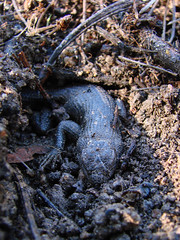
Grow baby grow
Some life thrives in the wet of Winter. For them, the moisture means it's grow time. Decomposers, mushrooms, molds and lichens take heavy advantage of the wetness. Log & leaf loving invertebrates, such as centi and millipedes, beetles, earwigs, termites and grubs, get busy. Slickery salamanders prey on them. But that's life under a rotting log.
Fungus, lichens and a salamander:

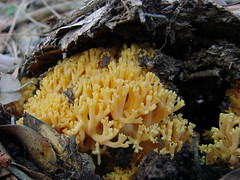
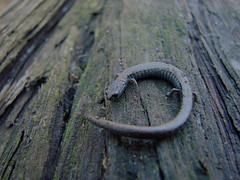
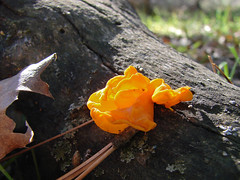
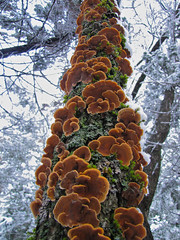
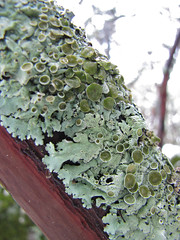
Some Sierra flowers bloom specifically in the snows of Winter, but I haven't found any around the property yet. Mosses also grow from the wetness, and wildflowers can randomly pop up in the balmy breaks. Winter green oaks, toyon, manzanita and ceanothus act as key foods for birds and leaf browsers, such as mule deer. Conifers are green in Winter, but few critters can eat much of 'em but their tasty seeds. Very little food is left in snowy regions for true grazers though - the rain and snow accelerates rot, so the once tall & tasty grasses quickly become nutritionless straw.
Winter green toyon, moss, buttercup & icy ceanothus:
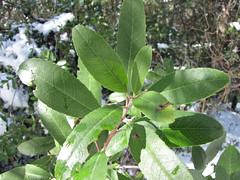
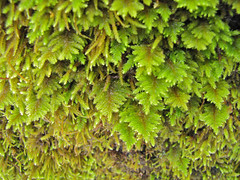

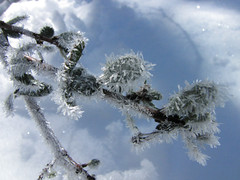
Be prepared
Fatten up, hoard acorns, find a warm den (maybe communal), and stay cozy at home on days when the weather is too lousy to forage. Go out and augment on the nice days. This boy scout turns couch potato strategy is used by lots of mid-size, burrow/den-friendly mammals, including gray squirrels, raccoons, skunks, porcupines, opossums & woodrats. Some are more industrious than others. A woodrat will stock 2 gallons of seeds, nuts & grasses in its midden for the Winter. A gray squirrel will move from its typical leaf nest to a hollow tree or like to gain more insulation. Skunks den together in large groups.
Several non-migrating birds adopt this approach too - woodpeckers and jays store & stash acorns. And woodpeckers ride out nasty weather in their nest holes.
Old stashed acorn and a woodrat midden:
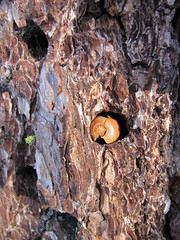

Make do
Do what you do the rest of the year - forage, hunt, etc., but do it with zest when the weather allows. Maybe foods change a bit, but overall behavior is roughly the same - just a little more frantic. Lots of larger mammals do this - coyotes, cougars, bobcats & foxes around our way. A top reason the predators can stay active is because the mule deer, rabbits, voles & gophers they prey on are similarly active - the shaggy deer hang around looking miserable while eating anything & everything, the rabbits hop on top of the snow drifts to forage, and the voles and gophers burrow between the snow and ground to nibble shoots and lichens. You can even see their winding trails when the snow melts.
Mule deer, coyotes, bobcat, rabbit & volepher tracks:


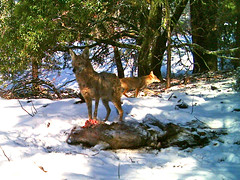
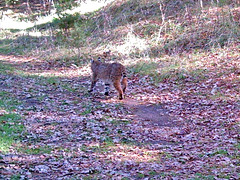


Hawks and owls also hang around since their food source is the same rabbits & rodents. Wild turkeys and quail band together in large groups to forage. And, many small omnivorous ground and tree foraging birds stay too. Nuthatches, titmice, thrushes, juncos, towhees, brown creepers and some woodpeckers, such as the red-bellied sap sucker, all chill in the Sierra for Winter, but just eat different bugs, seeds and shoots.
Nuthatches, brown creeper, titmouse & red-bellied sap sucker:
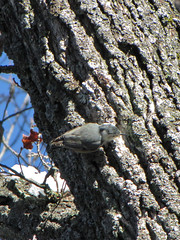
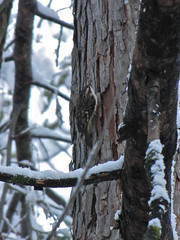



The birds are especially fun to watch on afternoons when it warms up and the snow starts melting. In those fair windows they come out gang busters and forage heavily under the trees with thick canopies and little snow buildup. The canyon oaks seem to be a favorite - not only do they block the snow, but they have acorns hiding in the dirt beneath them, and the lumps of snow that fall from their branches bring down tasty bugs and such. The jays especially recognize this connection and often sit and wait for big glops of snow to fall so they can swoop in and snap up any crawlies or acorns that show (even if first found by smaller birds).
Quail, thrushes, woodpecker, towhees & jays under canyon oak:
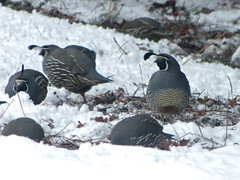



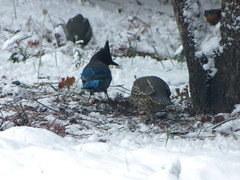

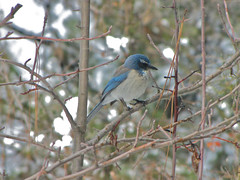
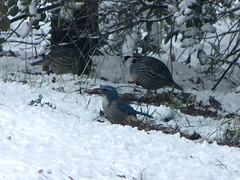
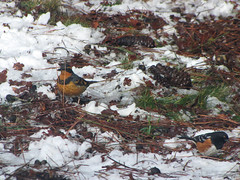
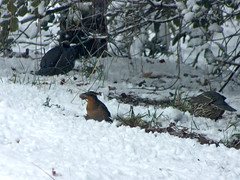
24 second video of quail, towhees & thrush foraging under canyon oak:
====
Winter Wrap-up
As we move into Spring, I can report that as far as I can tell, the animals around our way seem to be doing just fine during the Winter. The deer get a little bony (and a couple disappear care of coyotes and cougar and cars), but everything I've seen, tracked and camera trapped suggests the Winter cycle is active and working well. You go Mother Nature.
====
Related factoids:
How long does frozen meat stay edible?
Fresh frozen meat can actually stay edible indefinitely. However, over time, the moisture sublimates out of the meat and dries it out like a mummy (jerky). One of the best-documented accounts of a prehistoric meal is by Alaska zoology professor Dale Guthrie. After successfully unearthing and preserving "Blue Babe," a 36,000-year-old steppe bison found near Fairbanks in 1979, Guthrie's team celebrates by simmering some leftover flesh from Babe's neck "in a pot of stock and vegetables." The author reports that "the meat was well aged but still a little tough, and it gave the stew a strong Pleistocene aroma."
====
I'm Mister White Christmas
I'm Mister Snow
I'm Mister Icicle
I'm Mister Ten Below
Friends call me Snow Miser
What ever I touch
Turns to snow in my clutch
I'm too much!
Minions: He's Mister White Christmas, He's Mister Snow
He's Mister Icicle, He's Mister Ten Below...
Friends call me Snow Miser,
What ever I touch
Turns to snow in my clutch...
Minions: He's too much!
I never want to see a day
That's over forty degrees
I'd rather have it thirty,
Twenty, ten, five, and let it freeeeeeeeeze!
Friends call me Snow Miser,
What ever I touch
Turns to snow in my clutch...
I'm too much.
- The Year Without a Santa Claus, Rankin & Bass
====
References:
- John Muir Laws - The Laws Field Guide to the Sierra Nevada
- Tamara Eder - Mammals of California
- Energy Quest, California Energy Commission - Energy Story
- Wikipedia - Hibernation
- The Straight Dope - Prehistoric, it's what's for dinner...
- Rankin & Bass - The Year Without a Santa Claus

Nice, dude!
ReplyDeleteWell organized, well written and informative! I learned much, and enjoyed the read!
ReplyDelete